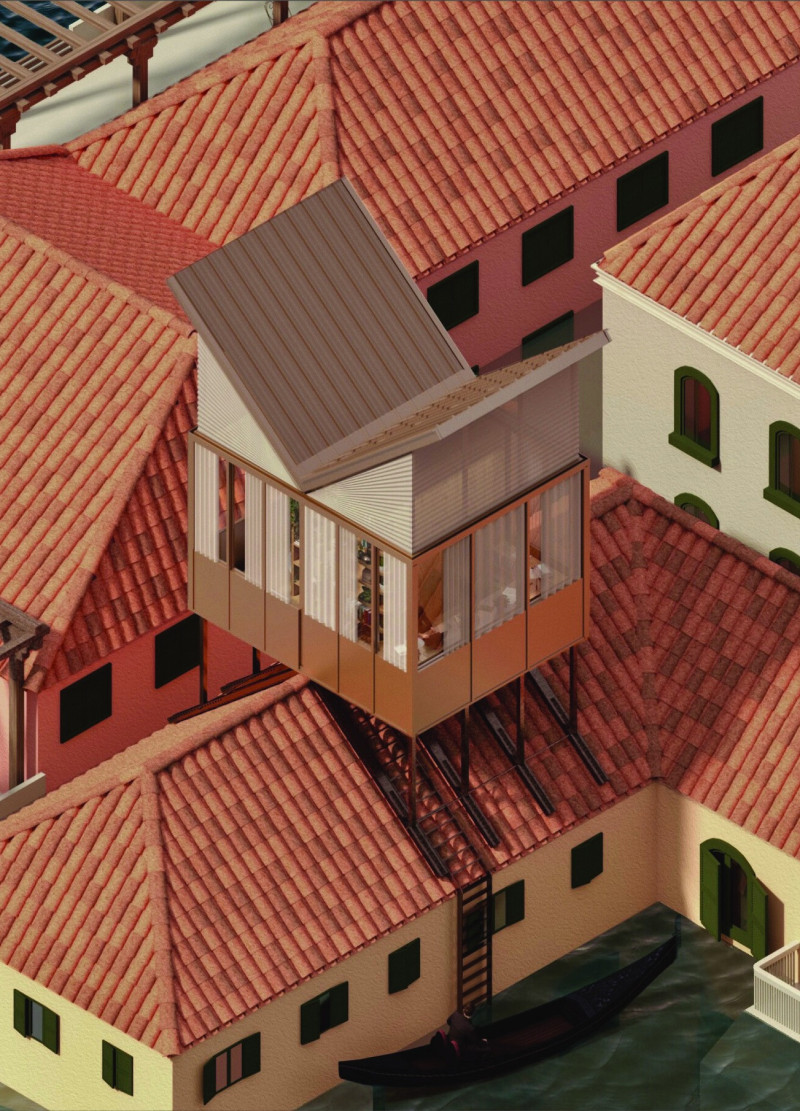5 key facts about this project
At its core, the project functions as a multifunctional space, catering not only to individual housing needs but also promoting social interaction among residents. This duality of purpose is a fundamental aspect of the design, underscoring the architects' vision of creating a community-oriented environment. Key features of the architectural design include open-concept floor plans that encourage natural flow and connectivity, as well as dedicated communal areas designed to foster collaboration and engagement among residents.
Materiality plays a significant role in the project's overall impact. The careful selection of materials, such as reclaimed wood, corten steel, glass, and concrete, illustrates a thoughtful approach to sustainability while also reflecting the local context. Reclaimed wood provides warmth and texture, connecting the design to its geographical landscape, while corten steel offers durability and an evolving patina that resonates with the passage of time. Large glass windows serve to invite ample natural light into the spaces, promoting both energy efficiency and a connection to the outdoors, reinforcing the importance of the surrounding nature in everyday living.
Several unique design approaches can be highlighted within this architectural project. The integration of green roofs and vertical gardens showcases an innovative way to enhance the building's ecological footprint while ensuring aesthetic continuity with the natural environment. The use of passive design strategies, such as strategic orientation and thermal mass, demonstrates the architects’ emphasis on energy efficiency, reducing reliance on mechanical climate control systems. This not only minimizes the environmental impact but also promotes a healthier living environment for residents.
Furthermore, incorporation of communal terraces and landscaped pedestrian pathways invites interaction, breaking down the traditional barriers often found in residential architecture. These outdoor spaces not only extend the living area but also enhance the sense of community, making it essential for social dynamics within the project.
Attention to detail is evident in every aspect of the architectural design. From the overall layout to the intricate facade elements, the design expertly balances functionality with aesthetic appeal. The architects have succeeded in creating a series of inviting spaces that respond thoughtfully to user needs while remaining firmly grounded in their environmental context.
The balance between innovation and tradition presents a refreshing perspective in the contemporary architectural landscape. This project offers an essential discourse on how modern architecture can coalesce with ecological considerations and community-building principles.
For those interested in further exploring this architectural project, a review of the architectural plans, sections, and designs will provide deeper insights into the initial concepts and the meticulous process behind its realization. Engaging with the detailed architectural ideas can reveal the depth of thought that has shaped this project, showcasing how it stands as a model for future developments in both residential and communal design.


























